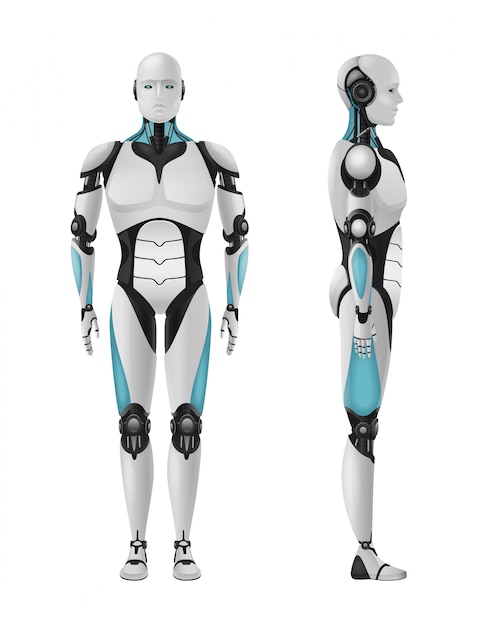Introduction Robotics is a branch of technology that deals with the design, construction, operation, and use of robots. A robot is a machine or an artificial agent that can perform tasks autonomously or with minimal human intervention. Robotics combines various fields such as mechanical engineering, electrical engineering, computer science, and artificial intelligence.General OverviewThe concept of …
The Evolution of Robotics

Introduction
Robotics is a branch of technology that deals with the design, construction, operation, and use of robots. A robot is a machine or an artificial agent that can perform tasks autonomously or with minimal human intervention. Robotics combines various fields such as mechanical engineering, electrical engineering, computer science, and artificial intelligence.
General Overview
The concept of robotics can be traced back to ancient times, with early examples found in ancient Greek and Egyptian mythology.
The first industrial robot, called the Unimate, was introduced in 1961 by George Devol and Joseph Engelberger. It was designed to perform repetitive tasks in a General Motors factory. This marked the beginning of the automation revolution in manufacturing industries.

In the following decades, robotics continued to advance with the introduction of computer-controlled robots and the development of more sophisticated sensors and actuators. The field of robotics expanded beyond industrial applications, with the emergence of service robots designed to assist humans in various tasks.
The integration of artificial intelligence techniques into robotics has been a significant milestone in its evolution. Machine learning algorithms and computer vision technology have enabled robots to perceive and understand their environment, learn from experience, and make autonomous decisions.
Types of Robots

There are different types of robots, including industrial robots, service robots, and humanoid robots. Industrial robots are commonly used in manufacturing processes, such as assembling products on assembly lines. Service robots, on the other hand, are designed to interact with humans and assist them in tasks like cleaning, caregiving, or providing information. Humanoid robots are designed to resemble humans in appearance and behavior, aiming to interact with humans in a more natural way.
The development of humanoid robots has also been a focus of research in recent years. Humanoid robots are designed to resemble humans in appearance and behavior, with the goal of interacting with humans in a more natural way. Examples include ASIMO by Honda and Sophia by Hanson Robotics.
Challenges Facing Robotics

These are just a few of the challenges facing robotics. However, researchers and engineers are continuously working to overcome these challenges and push the boundaries of what robots can do. Here are some of the challenges facing robotics:
1. Safety: Ensuring the safety of robots is a crucial challenge. Robots are often used in environments where they interact with humans, and there is a need to develop safety measures to prevent accidents and injuries. This includes designing robots with built-in safety features, implementing collision detection and avoidance systems, and creating standards and regulations for robot safety.
2. Ethical Considerations: As robots become more advanced and capable, there are ethical considerations that need to be addressed. For example, questions arise about the impact of robots on jobs and the economy, the potential for robots to replace human workers, and the ethical use of robots in military applications. It is important to have discussions and guidelines in place to ensure the responsible development and use of robotics technology.
3. Human-Robot Interaction: Designing robots that can effectively interact with humans is a challenge. Robots need to understand and respond to human gestures, speech, and emotions in a natural and intuitive way. This involves developing advanced natural language processing and computer vision algorithms, as well as creating user-friendly interfaces and intuitive control systems.
4. Adaptability: Robots often operate in dynamic environments where conditions can change unpredictably. Ensuring that robots can adapt and respond to changing circumstances is a challenge. This includes developing algorithms and systems that enable robots to learn from their environment, make autonomous decisions, and handle unexpected situations.
5. Perception and Manipulation: Robots need to be able to perceive and understand their environment in order to perform tasks effectively. This involves developing computer vision algorithms that can recognize objects and navigate through complex environments. Additionally, robots need to have precise and dexterous manipulation capabilities to interact with objects and perform tasks that require fine motor skills.
6. Cost and Scalability: Robotics technology can be expensive, which limits its adoption in certain industries and applications. Making robotics more affordable and scalable is a challenge. This includes finding ways to reduce the cost of components, improving manufacturing processes, and developing standardized platforms that can be easily adapted for different tasks and industries.
Conclusion

In conclusion, robotics is a fascinating field that combines various disciplines to create intelligent machines capable of performing tasks autonomously. The applications of robotics are vast and continue to expand, making it an exciting area to explore.
However, despite the advancements in robotics, there are still challenges to overcome. Ensuring the safety of robots, addressing ethical considerations, and integrating robots into society are ongoing areas of research.


